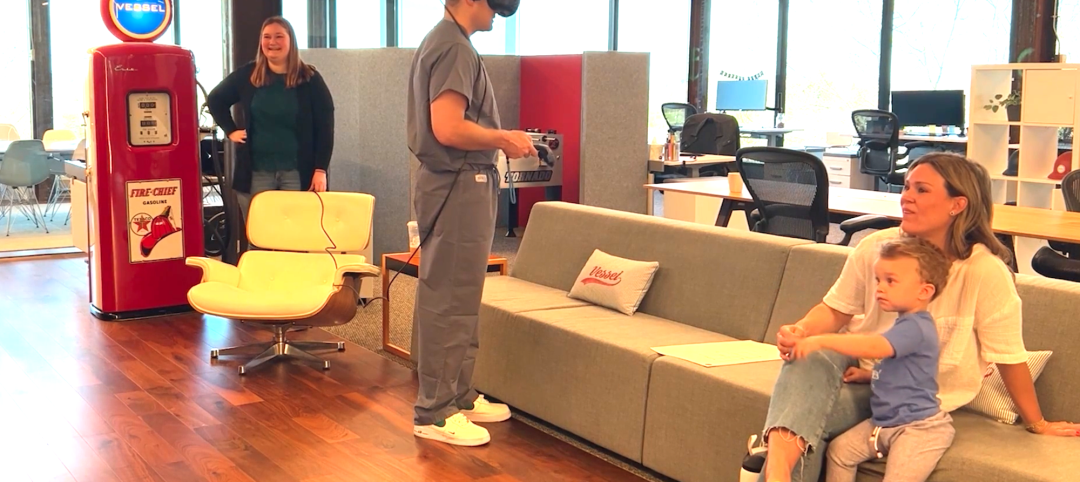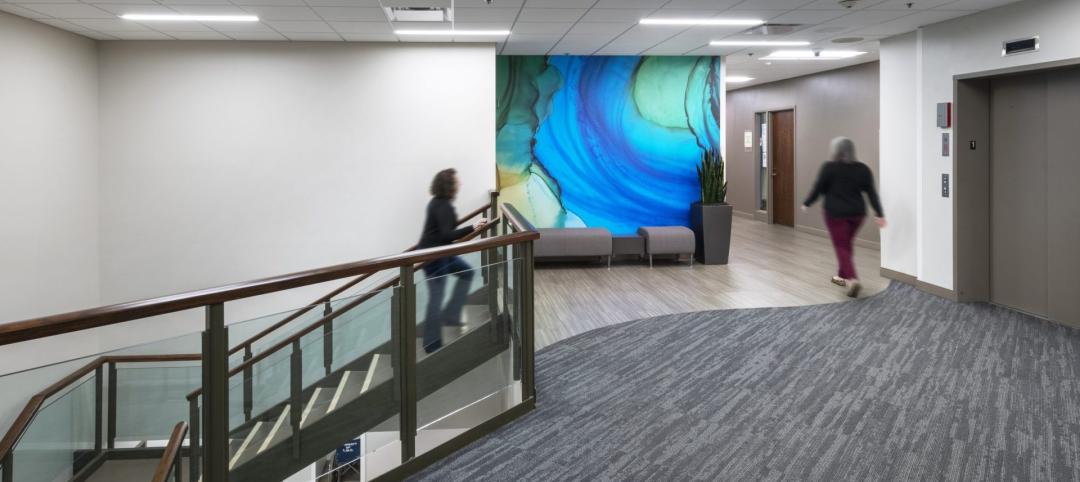After three years of slow but continuing improvement, architecture and engineering (A&E) firms are healthier now than at any time since the start of the great recession, according to initial findings of the 2013 Architectural and Engineering Study from DiCicco, Gulman & Company LLP (DGC), a CPA and business consulting firm specializing in the A&E profession.
This soon-to-be released survey benchmarks financial performance and other key indicators based on input from over 40 architecture and engineering firms headquartered in the greater Boston area. The study, conducted annually, contains some of the most comprehensive financial data available on the A&E industry.
“Most firms are doing better than they did in 2011,” says Chad DaGraca, a partner in DCG’s A&E practice. While the report shows a 2.6% increase in profits, perhaps more significant is the fact that firms also increased hiring, made investments in infrastructure and saw continued growth in the volume of their business. “These are signs of a true recovery,” DaGraca says.
One reason for the improvement is renewed activity in the private sector. Many companies—including a good number of the Fortune 500—have been loosening their purse strings and investing in new buildings and facilities. “Companies are spending money because they have more confidence in the overall direction of the economy,” he says.
At the same time, the residential housing market has stabilized and is improving in certain markets across the country. With more work to be found in the housing sector, firms that were forced to bid on other types of projects are increasingly returning to their normal line of work.
While competition remains stiff, there are clear signs of easing within the industry. The average billing multiple, for example, rose again in 2012, increasing to 3.12 from 3.08 in 2011. “The pricing pressure in the marketplace is loosening up,” DaGraca says. “Most firms would still characterize the competition as significant, but there is certainly more work to be had. This will also shift more and more emphasis towards focusing on best practices in the area of project management; as firms begin to grow again, they will need to ensure their projects are profitable in this competitive environment.”
Likewise, the utilization rate, which is the percentage of time worked on billable projects, rose slightly to 65.3%, putting it above 65% for the first time since the recession.
While the survey focuses on 2012 data, responses indicate that 2013 will likely show continued improvement, DaGraca says. Another indication of continuing industry growth, he says, is the AIA's Architectural Billings Index, which has reported growth in design firm billings for eight of the last nine months. “We are still not back to pre-2008 levels, but we are moving in the right direction, says Dave Sullivan, partner in DGC’s A&E practice.”
As A&E firms gain strength, Sullivan expects to see many firms tackling long-range strategic initiatives such as succession planning, the impact of industry consolidation, and staff development. Staffing, for example, is getting increased attention as firms try to make sure that they have people with the right skill sets in the right positions. Employees are also beginning to look for new opportunities as the job market eases. Turnover has been relatively low over the past two years, but that will change in 2013, so firms need to be prepared for those changes and have a plan in place to attract and retain good people.
“Industry consolidation and succession planning will continue to be among the leading challenges for the industry in 2013”, says Sullivan. “The recession has put more pressure on the demographic shift in firm ownership created as the baby boomer generation heads to retirement. Firm owners need to plan early to execute a successful succession plan and to achieve their longer term ownership goals for the firm. This is not an easy task as many firms will attest to.” The DGC 2013 Architectural and Engineering Study, which will be available this summer, highlights the firm’s expertise and in-depth knowledge of the architecture and engineering professions. DGC experts analyze financial data from prominent firms in the Greater Boston region, focusing on operational performance metrics and identifying emerging trends.
About DiCicco, Gulman & Company LLP
DiCicco, Gulman & Company LLP (DGC) is a CPA and business consulting firm specializing in A&E firms, as well as private clients, real estate and commercial business. As an independent member firm of Moore Stephens North America, DGC has access to a global network of technical expertise and best practices, which result in elevated performance standards. For more information please visit www.dgccpa.com or call 781-937-5320.
Related Stories
Architects | Jun 22, 2023
Keith Hempel named President of LPA Design Studios
LPA Design Studios today announced the promotion of Chief Design Officer Keith Hempel, FAIA, to president of the 58-year-old integrated design firm. Hempel, who joined LPA in 1995, has been an integral part of the firm’s growth, helping to develop an integrated design process that has produced industry-leading results.
Industrial Facilities | Jun 20, 2023
A new study presses for measuring embodied carbon in industrial buildings
The embodied carbon (EC) intensity in core and shell industrial buildings in the U.S. averages 23.0 kilograms per sf, according to a recent analysis of 26 whole building life-cycle assessments. That means a 300,000-sf warehouse would emit 6,890 megatons of carbon over its lifespan, or the equivalent of the carbon emitted by 1,530 gas-powered cars driven for one year. Those sobering estimates come from a new benchmark study, “Embodied Carbon U.S. Industrial Real Estate.”
Virtual Reality | Jun 16, 2023
Can a VR-enabled AEC Firm transform building projects?
With the aid of virtual reality and 3D visualization technologies, designers, consultants, and their clients can envision a place as though the project were in a later stage.
Mechanical Systems | Jun 16, 2023
Cogeneration: An efficient, reliable, sustainable alternative to traditional power generation
Cogeneration is more efficient than traditional power generation, reduces carbon emissions, has high returns on the initial investment, improves reliability, and offers a platform for additional renewable resources and energy storage for a facility. But what is cogeneration? And is it suitable for all facilities?
Office Buildings | Jun 15, 2023
An office building near DFW Airport is now home to two Alphabet companies
A five-minute drive from the Dallas-Fort Worth International Airport, the recently built 2999 Olympus is now home to two Alphabet companies: Verily, a life sciences business, and Wing, a drone delivery company. Verily and Wing occupy the top floor (32,000 sf and 4,000 sf, respectively) of the 10-story building, located in the lakeside, work-life-play development of Cypress Waters.
Transit Facilities | Jun 15, 2023
Arlington, Va., transit station will support zero emissions bus fleet
Arlington (Va.) Transit’s new operations and maintenance facility will support a transition of their current bus fleet to Zero Emissions Buses (ZEBs). The facility will reflect a modern industrial design with operational layouts to embrace a functional aesthetic. Intuitive entry points and wayfinding will include biophilic accents.
Urban Planning | Jun 15, 2023
Arizona limits housing projects in Phoenix area over groundwater supply concerns
Arizona will no longer grant certifications for new residential developments in Phoenix, it’s largest city, due to concerns over groundwater supply. The announcement indicates that the Phoenix area, currently the nation’s fastest-growing region in terms of population growth, will not be able to sustain its rapid growth because of limited freshwater resources.
Multifamily Housing | Jun 15, 2023
Alliance of Pittsburgh building owners slashes carbon emissions by 45%
The Pittsburgh 2030 District, an alliance of property owners in the Pittsburgh area, says that it has reduced carbon emissions by 44.8% below baseline. Begun in 2012 under the guidance of the Green Building Alliance (GBA), the Pittsburgh 2030 District encompasses more than 86 million sf of space within 556 buildings.
Industry Research | Jun 15, 2023
Exurbs and emerging suburbs having fastest population growth, says Cushman & Wakefield
Recently released county and metro-level population growth data by the U.S. Census Bureau shows that the fastest growing areas are found in exurbs and emerging suburbs.
Healthcare Facilities | Jun 14, 2023
Design considerations for behavioral health patients
The surrounding environment plays a huge role in the mental state of the occupants of a space, especially behavioral health patients whose perception of safety can be heightened. When patients do not feel comfortable in a space, the relationships between patients and therapists are negatively affected.

















